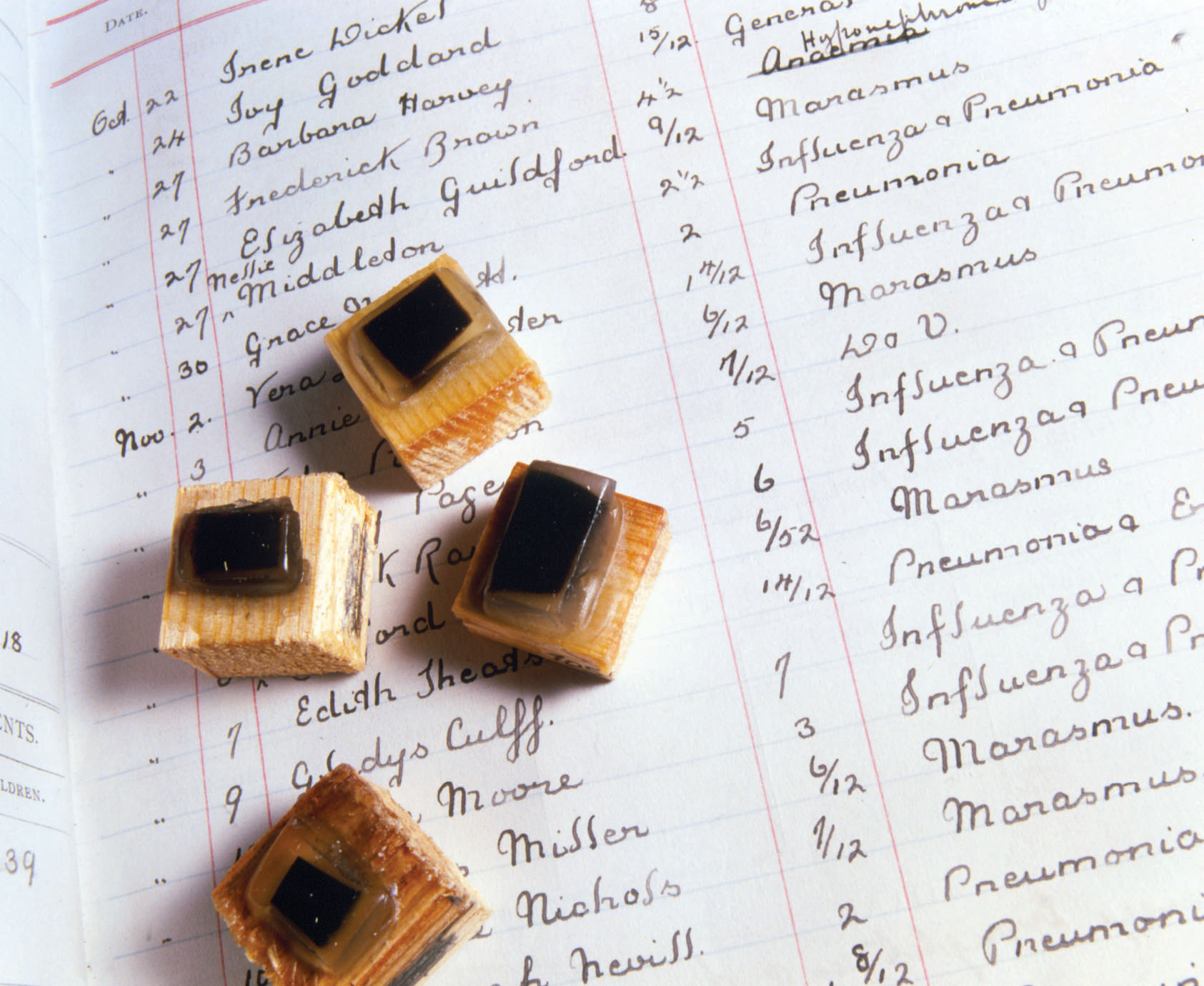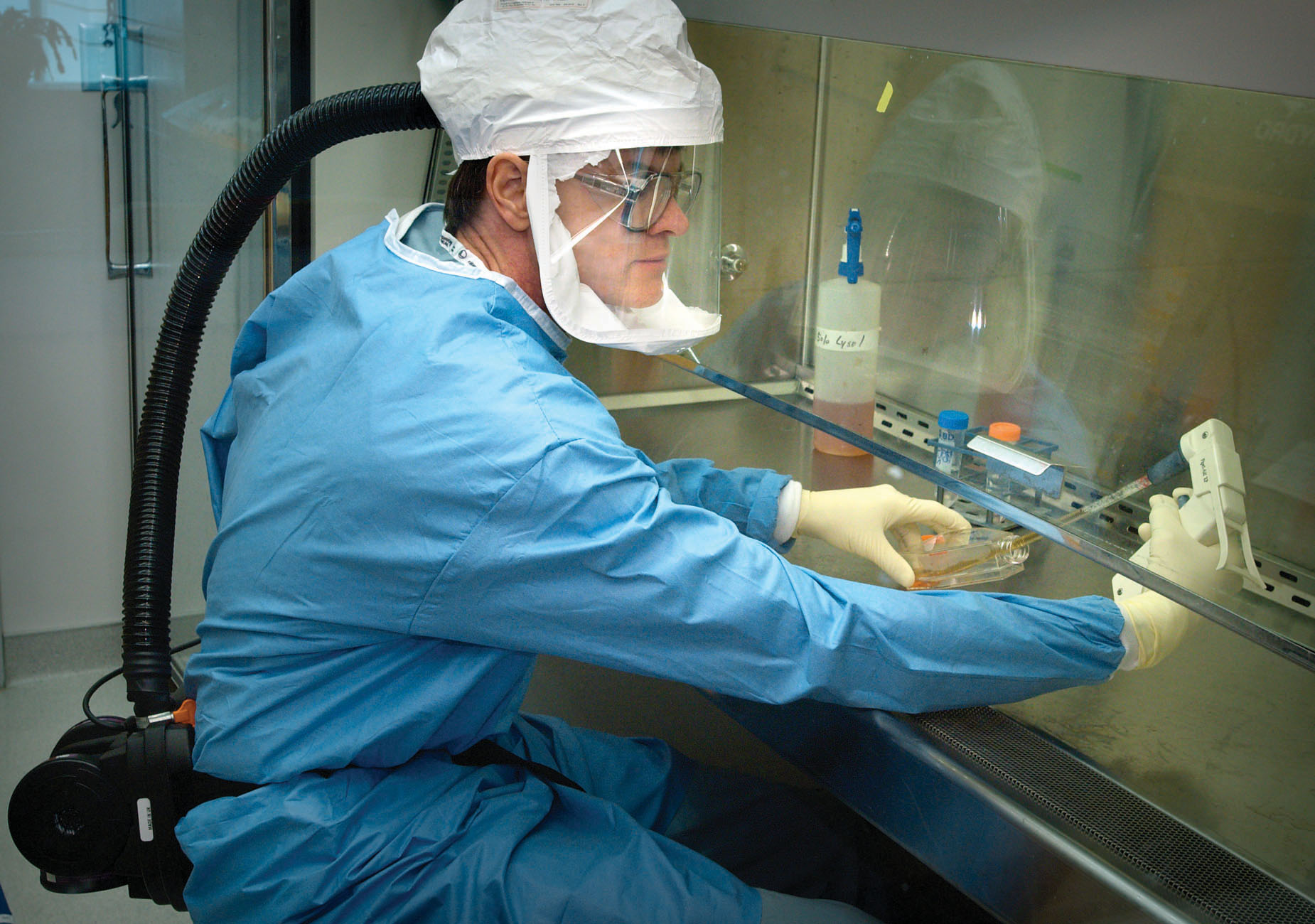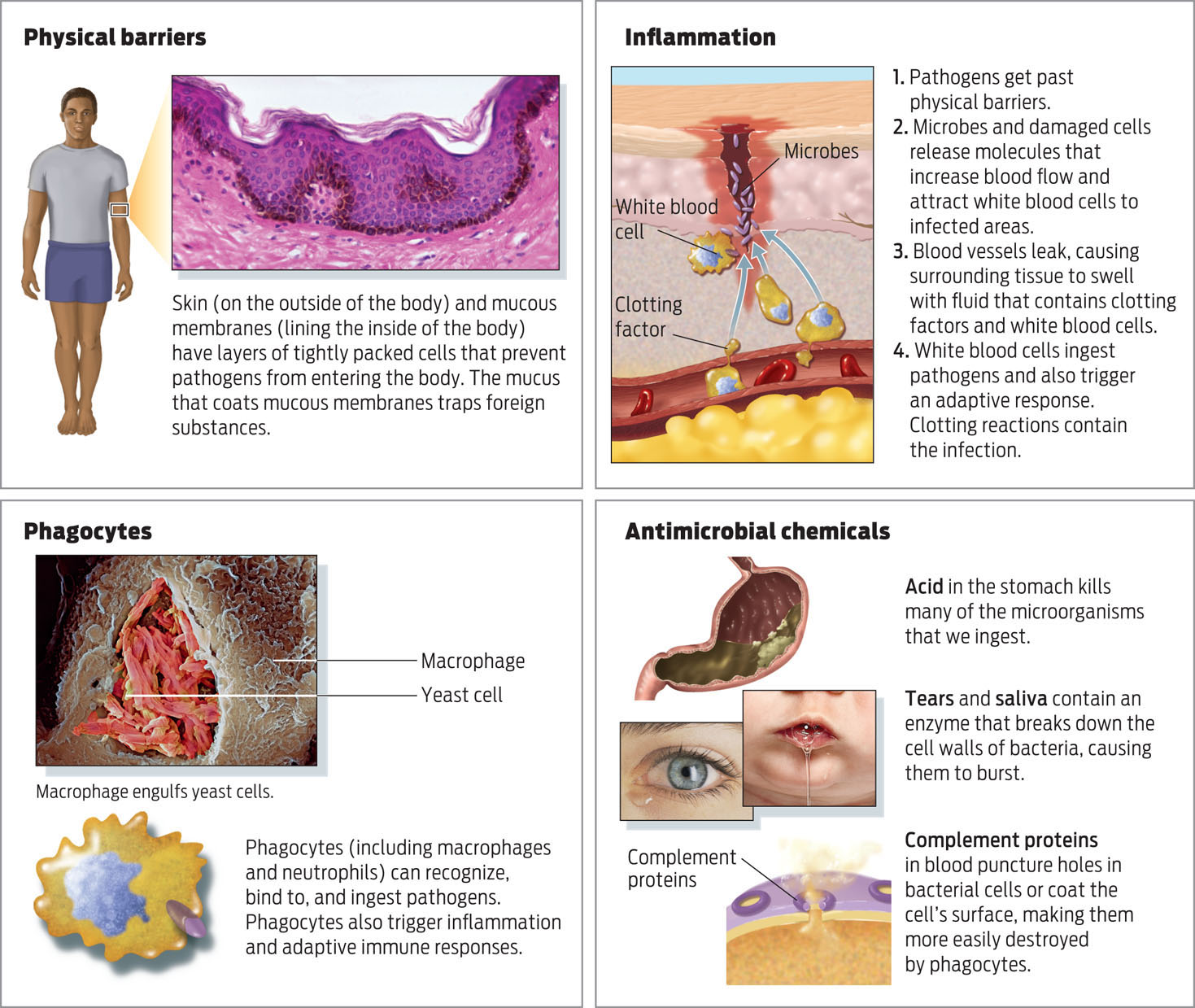INNATE DEFENSES

The innate immune system starts defending at sites where the body is exposed to the outside world. Enzymes in saliva destroy some pathogens; nasal hair and the mucus that lines the throat trap others. Under the layer of mucus is a layer of cells with hairlike projections called cilia that sweep away pathogens to prevent them from taking hold in the throat. When pathogens do successfully breach these physical barriers, the body tries to flush them out with more fluid: runny noses, watery eyes, coughs, and sneezes are your body’s way of expelling the invaders.
INFLAMMATION An innate defense that is activated by infection or tissue damage; characterized by redness, heat, swelling, and pain.
When pathogens overcome these physical and chemical defenses, they trigger additional innate responses. One of the most important things the innate immune system does is promote inflammation in response to tissue damage or infection. Tissues that have been damaged by injury or by infection release chemicals such as histamine that cause blood vessels to expand and leak fluid into surrounding tissues. These chemical signals also attract various white blood cells to the region. The redness, heat, swelling, and pain associated with inflammation are the result of increased blood flow to the area (causing redness and heat), release of fluids and white blood cells from the leaky blood vessels (causing swelling), and release of chemical signals from damaged tissue (causing pain). The fluid at inflamed sites also contains clotting proteins that stop bleeding and prevent pathogens from spreading to neighboring tissues.
HISTAMINE A molecule released by damaged tissue and during allergic reactions.
PHAGOCYTE A type of white blood cell that engulfs and ingests damaged cells and pathogens.
MACROPHAGE A phagocytic cell that resides in tissues and plays an important role in the inflammatory response.
Several types of white blood cell contribute to our innate defenses. Most important are phagocytes, which include macrophages, found in tissues, and neutrophils, which patrol the bloodstream. When phagocytes come into contact with pathogens, they bind to and engulf the invaders in a process called phagocytosis. Some phagocytes enhance the inflammatory response, and others help initiate an adaptive response against the specific invader. Still other white blood cells, called natural killer cells, attack virus-infected cells—and even cancer cells—and kill them.
NEUTROPHIL A phagocytic cell in the circulation that plays an important role in the inflammatory response.
NATURAL KILLER CELL A type of white blood cell that acts during the innate immune response to find and destroy virally infected cells and tumor cells.

INTERFERON Antiviral proteins produced by virally infected cells that help protect adjacent cells from becoming infected.
COMPLEMENT PROTEINS Proteins in blood that help destroy pathogens by coating or puncturing them.
The body has other nonspecific defenses. These include proteins that either attack pathogens directly or prevent them from reproducing. Virus-infected cells can send out “SOS” signals in the form of interferon. Interferon proteins impede viral replication in neighboring cells and also signal other immune cells to become active. Other defensive proteins, called complement proteins, coat the surface of pathogens, making them more easily destroyed by phagocytes, or directly destroy some bacteria by punching holes in the cell membrane (INFOGRAPHIC 31.4).
Though the innate immune system provides some protection against influenza, occasionally some virus particles manage to evade the body’s physical and chemical barriers and take up residence in the upper respiratory tract: the mouth, the nose, and the throat. Within minutes, these virus particles attach to epithelial cells that line the respiratory tract and slip inside the body. The virus then hijacks the host cells’ cellular machinery to replicate its own genetic material. Generally, about 10 hours after the virus invades a cell, the cell begins to release newly synthesized viral particles, sending out between 1,000 and 10,000 viruses capable of infecting other cells. Eventually the infected cells die, weakening the respiratory tract.
What killed many people was not the virus itself but the overly aggressive inflammatory response mounted against it.
Normally our bodies are able to mount a sufficient immune response to contain the infection, so a typical course of flu lasts only about a week and is not generally fatal. Why the 1918 flu was so deadly, researchers at the time could not say. More perplexing still was why the virus tended to kill people in the prime of their lives—those with the healthiest immune systems. It would be more than 75 years before researchers could even begin to answer those questions.
